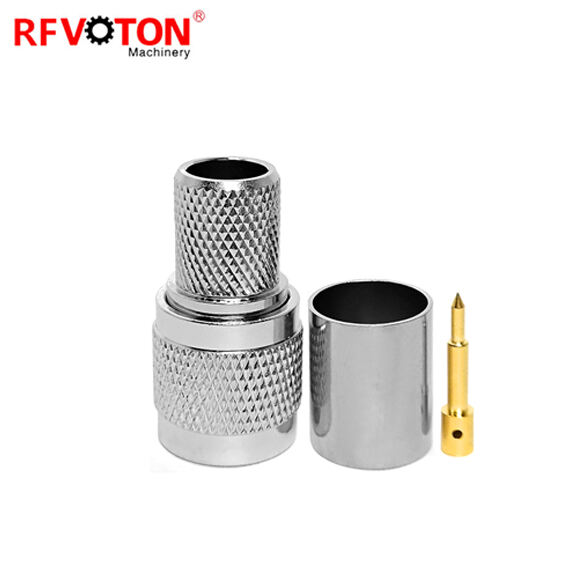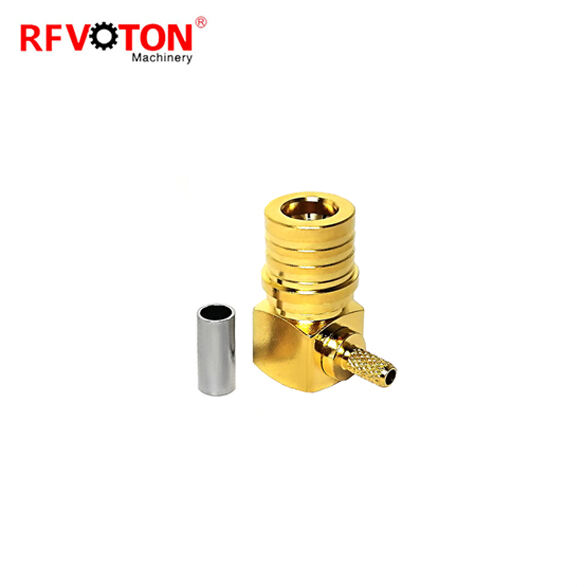Complete Guide to Basic Knowledge of Coaxial Connectors
Common coaxial structures generally include SMA, BNC, etc., which are well-known for their widespread use. However, the coaxial series goes far beyond these interfaces, and in various applications, coaxial can be said to have a particularly rich range of interfaces.
1. SMA
SMA operates at frequencies ranging from 0 to 18GHz and is a widely used small threaded coaxial connector with superior performance and high reliability. It is widely used in microwave equipment and digital communication equipment for RF coaxial cable components or microstrip.

2. SMB
SMB, a push in connector with a stop, is small in size, easy to insert and remove, has good vibration resistance, and takes up little space. It is widely used in communication equipment, instruments, and navigation systems with operating frequencies ranging from 0 to 4GHz.

3. SMC
SMC is a threaded deformation of SMB, with the same internal structural dimensions as SMB. It operates at a frequency of 0-11GHz and is commonly used in radar, navigation, and other applications.

4. BNC
BNC operates at a frequency of 0-4GHz, and its biggest feature is convenient connection. Generally, it can be connected by rotating the connecting sleeve less than one turn. It is suitable for frequent connection and separation situations and is currently a universal product, especially widely used in the fields of instruments, networks, and computers.

5. TNC
TNC is a threaded deformation of BNC, also known as threaded BNC, with a working frequency of 11GHz and good vibration resistance.

6. RCA
RCA, commonly known as lotus socket, uses coaxial transmission of signals. The central axis is used for signal transmission, and the outer contact layer is used for grounding. Its applications include analog video, analog audio, digital audio, and color difference component transmission.

7. FME
It is also a compact and compact coaxial interface, commonly used in vehicle equipment because the cable socket structure is also very small, installation is very simple, does not take up too much space, and can be easily converted to other types of connectors.

8. F-type
The F series coaxial connector is a small to medium-sized threaded connector, commonly used in video transmission networks and public antenna systems.

9. MMCX
It is a new type of push in connector and the smallest connector currently used.

10. MCX
Its basic functions are similar to SMB, but its volume is one-third smaller than SMB.

11. N-type
The N series adopts thread docking and exchange, with two versions available in 50 and 75 ohms. The working frequency is 0-11GHz, and it can be paired with 3-12mm soft, semi soft, and semi rigid cables. The precision N-head is even used in 18GHz environments, and typical application scenarios include local area networks, testing equipment, satellites, etc.

12. UHF
The wire type of UHF connectors is basically the same as most other coaxial connectors, which are divided into soldered wire type and crimped type. Soldering is the process of welding the central conductor and cable shielding layer. Crimping is the process of crimping the central conductor and cable shielding layer, with high efficiency and good performance. Welding wire type is stable and reliable. Generally, flexible cables are mostly crimped, while semi flexible cables and semi steel cables are mostly welded.

13. QMA
Both QMA and QN connectors are quick connect connectors, which have two main advantages: first, they can be quickly connected, and the time to connect a pair of QMA connectors is much lower than the time to connect SMA connectors; The second is that quick connectors are suitable for connecting in narrow spaces.

14. TRB
This series of interfaces has the characteristics of fast insertion and removal, stable electrical performance, and can be used in higher shielding performance data transmission scenarios.

15. EIA
EIA connector is a type of RF coaxial connector with various models, such as EIA 7/8 ", EIA 1 5/8", EIA 3 1/8 ", EIA 4 1/2", and EIA 6 1/8 ". These connectors are designed to support foam or air dielectric cables, usually consisting of a body, mounting flanges with various bolt rings, and have interchangeable/removable central conductor "bullets".

Recommended Products
Hot News
-
What is RF coaxial connector? What are the characteristics and applications?
2025-07-01
-
BNC Connector
2024-07-22
-
SMA connector
2024-07-19
-
The difference between BNC connectors and SMA connectors
2024-07-03
-
What are the advantages of anti-interference coaxial cables
2023-12-18
-
Complete Guide to Basic Knowledge of Coaxial Connectors
2023-12-18
-
Why is the anti-interference ability of coaxial cables so strong
2023-12-18

 EN
EN
 AR
AR
 BG
BG
 HR
HR
 CS
CS
 NL
NL
 FI
FI
 FR
FR
 DE
DE
 EL
EL
 HI
HI
 IT
IT
 JA
JA
 KO
KO
 NO
NO
 PL
PL
 PT
PT
 RO
RO
 RU
RU
 ES
ES
 TL
TL
 IW
IW
 ID
ID
 VI
VI
 HU
HU
 TH
TH
 TR
TR
 FA
FA
 MS
MS
 UR
UR
 HA
HA
 JW
JW
 LA
LA
 MY
MY
 KK
KK
 TG
TG
 UZ
UZ
 AM
AM
 PS
PS










